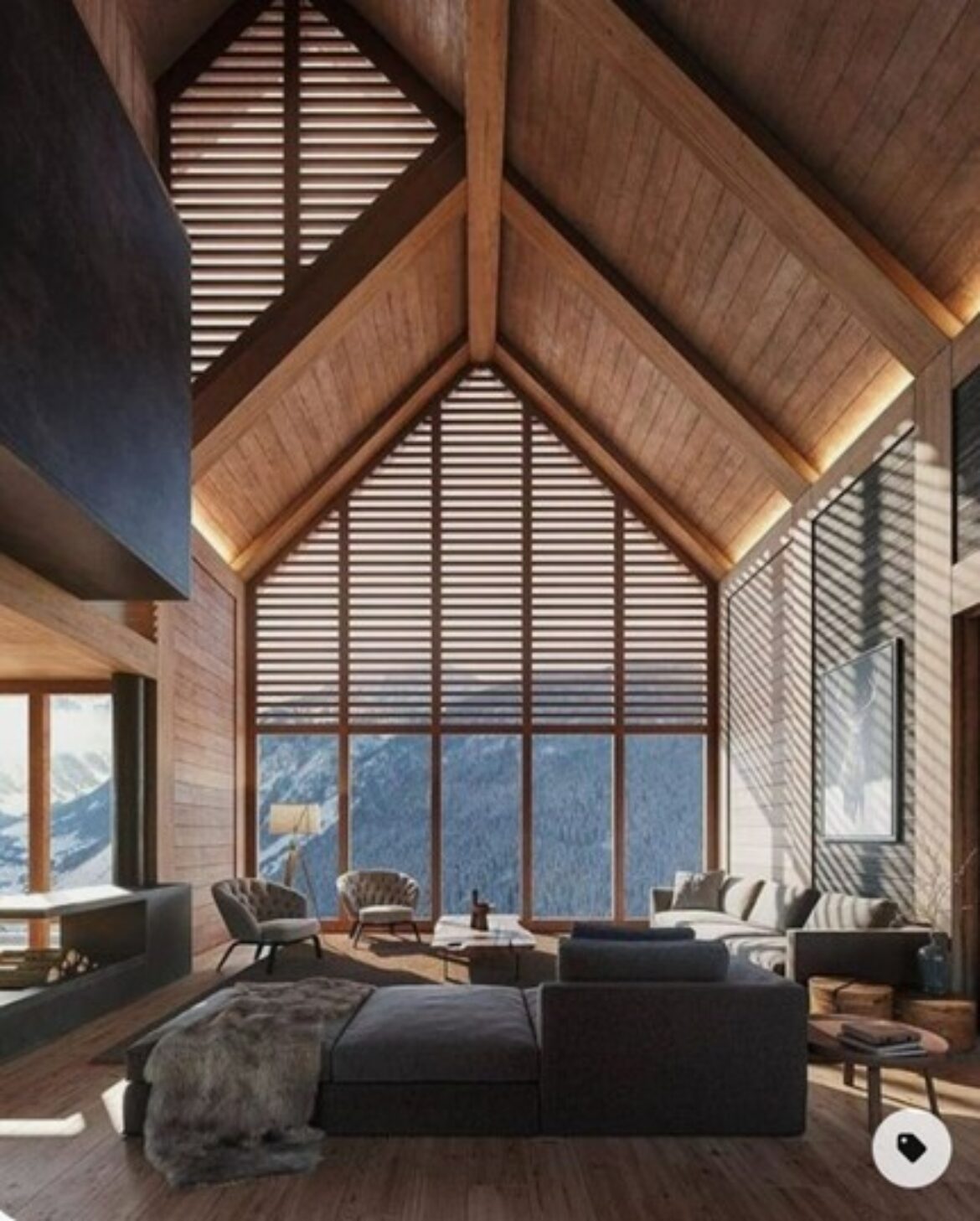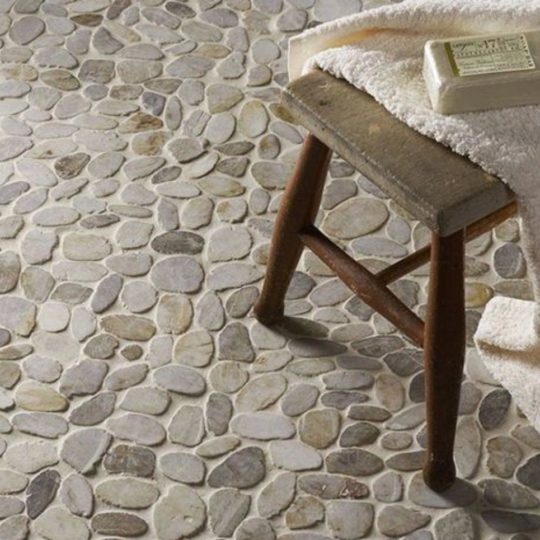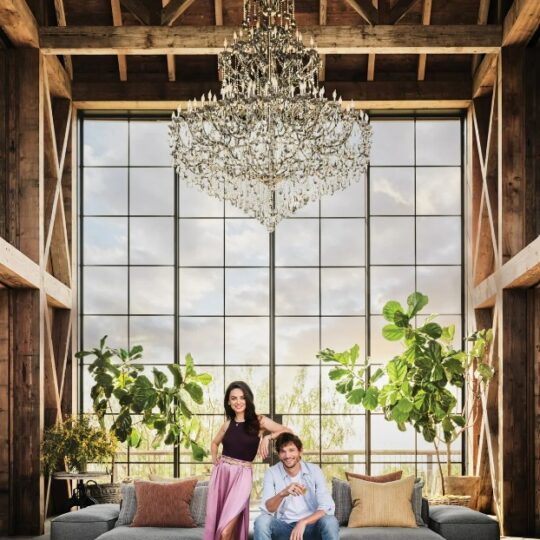“The history of architecture is the history of the struggle for light.”
Le Corbusier – Architect
Think about the difference between getting your photo taken in at your local DMV under harsh fluorescent lighting, versus your picture at a sexy, low-lit restaurant. Good lighting is truly everything, but it is oftentimes an afterthought when designing a room.
Whether it’s a bright task lamp on your desk to help you stay productive or a sconce by your bedside for cozy late-night reading, lighting is one of the most powerful tools for creating a specific mood.
Bringing lighting decisions to the forefront of the design can make all the difference, and we’ll show you how.
Layer the Light
Lighting, like any great interior design element, should be layered to create contrast. A mix of accent, ambient, natural, and task lighting in the home provides a nice balance of light and dark that grants each room richness and depth:
- Accent lighting – supplementary light that illuminates dark corners or small spaces. A can light placed above a shower enclosure is one example.
- Ambient lighting – the general overall light that illuminates the entire space, such as a chandelier in the center of a room.
- Task lights – provide focused illumination, like sconces around a mirror.
- Natural light – one of the most important for well-being. Knowing the orientation of your windows can inform how much artificial light is needed for the room. Other forms of natural light can be introduced through design elements like a skylight or fireplace.
Be Flexible
When it comes to lighting, the more flexibility, the better. Having direct control over the feel of your room can be as easy as installing a dimmer on your lights. Dimmers can help you transform your space from spotlighting your late-night karaoke to setting the perfect atmosphere for a dinner party.
As far as bulb types, LEDs are the way to go. Anywhere from 2700 to 3000 kelvin will give a warm glow. Anything higher will feel more industrial, fitting better in utilitarian spaces like a garage.
Lighting by Room
Mix it up in the Great Room
Whether it’s hosting a game night or relaxing with family after work, you want your living room lighting to be as versatile as your lifestyle. “Consider scale. Table lamps are great, but sometimes a large lantern, an oversized pendant, or a big sculptural floor lamp can add a focal point that every well-designed room should have.” (1)
Try a sculptural sconce in a darker area, nestled next to a window seat. LED strips to highlight shelving or enhance a fireplace mantle can bring your space to the next level.
Go Bright in the Kitchen
Undercabinet LED tape works seamlessly as task lighting for cooking. Some LED strips even incorporate a power strip, so you don’t have to disturb the backsplash tile.
Pendants make great task lighting above the island. We’re loving the look of two larger pendants, which can make a statement without sacrificing view.
After placing task lighting, fill the dark spots in with recessed cans, usually placed 4-6 ft apart for even light.
Placing pendant lights
2 Pendants: Determine the length of your island and divided it in half, then divided that in half again to determine the centerline of the pendants. This method ensures there is no overlap of light that can create bright spots.
Create a Spa-Like Bathroom
Creating a spa-like environment is easy with a few different lighting fixtures. Special attention should be brought to a fixture’s rating. Dry-rated fixtures are fine in most bathrooms with good ventilation, but damp-rated is best if there’s the possibility of exposure to moisture. Wet-rated fixtures can be directly exposed to water, like a fixture in a shower enclosure.
Try placing sconces on either side of mirrors 65” off the floor rather than above to create flattering light that illuminates the entire face.
Play with Ambience in the Dining Room
Creating a suitable atmosphere for dining can turn your meals into an experience. The focus of the dining room is the dining table, so it is best to cater your lighting design to the dining table size and shape, rather than the room as a whole. Match the shape of your table to your fixture. (But not always, the image above relates the chandelier to the ceiling treatment which yields an outstanding result). A rectangular chandelier over a long rectangular table will look more proportional and balanced. Ensure the fixture hangs relatively low: typically, the bottom of the light fixture should be around 36 inches above the table.
Picture lights above art, floor lamps in dark corners, or sconces flanking a mirror can all act as secondary accent lighting that pulls the room together.
Set the Mood in the Bedroom
A bedroom is a place for rest and relaxation, and the lighting should reflect that. Create a cozy environment with sconces or pendants on either side of the bed, which frees up precious nightstand space.
Consider a fireplace for natural light that’ll keep you warm.
A pendant or sculptural chandelier centered over the bed at 8-12 inches from the ceiling can create a focal point that makes a statement.
Using dimmers in the bedroom is an easy way to go from bright lights for dressing or reading to a low glow perfect for relaxation.
Don’t Forget the Garage
While fluorescent bulbs have long been the standard for shop lights, LED lights have begun to overtake the field. These LED lights by GetLitLed provide the bright light you need in a more industrial space while elevating the design and highlighting some of your more prized possessions.
For help designing the perfect lighting for you home, contact Talie Jane Interiors at 855-TALIE JANE (855-825-4352).
Article by Savannah Scoville, Assistant Designer at Talie Jane Interiors.
Sources
- https://www.nytimes.com/2018/09/18/realestate/lighting-a-room-simplified.html
- https://www.apartmenttherapy.com/10-tips-to-improve-your-lighti-94943
Images
- Pinterest.com
- Collections | Get Lit LED Lighting Store




















Sorry, the comment form is closed at this time.